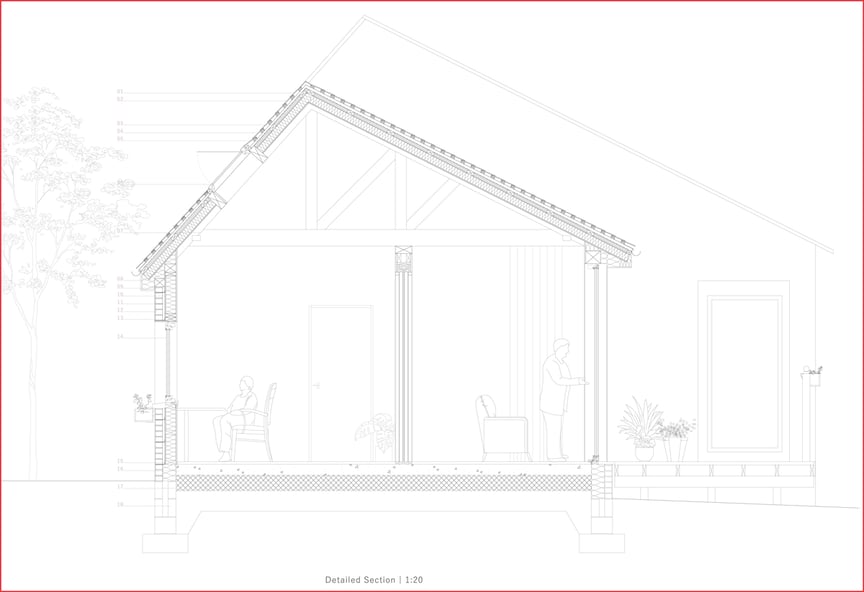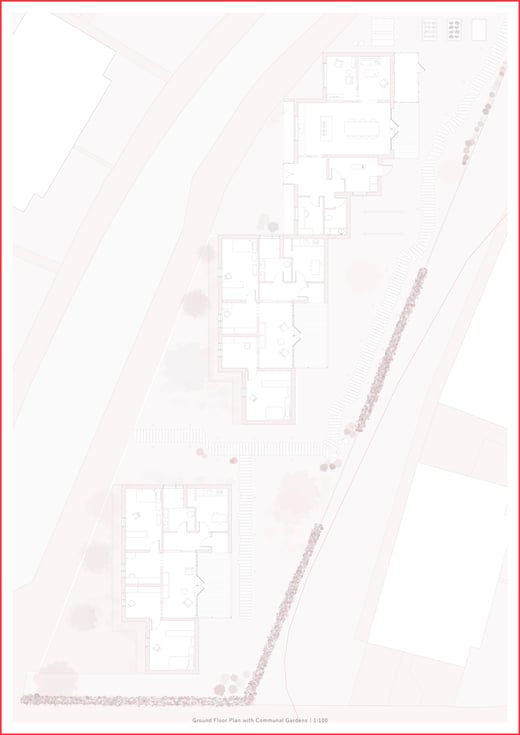 Today, we're introducing Chung Chan, an Architectural Assistant who joined us after graduating from the University of Dundee. Chung is deeply passionate about sustainable design and environmental responsibility—values that align closely with our own. Her academic work focused on deep retrofit housing and sustainable co-living models, and she brings that same drive for better, more thoughtful living solutions into her role here at ACA.
Today, we're introducing Chung Chan, an Architectural Assistant who joined us after graduating from the University of Dundee. Chung is deeply passionate about sustainable design and environmental responsibility—values that align closely with our own. Her academic work focused on deep retrofit housing and sustainable co-living models, and she brings that same drive for better, more thoughtful living solutions into her role here at ACA.
In practice, Chung supports our architectural team with feasibility studies, concept design, planning applications, and 3D modelling. She’s particularly excited to explore Passivhaus design in self-build projects and enjoys creating visuals that bring early-stage ideas to life.
We’re thrilled to have Chung as part of our team and can’t wait to see the positive impact she’ll make through her thoughtful design approach.
WHAT INSPIRED YOU TO PURSUE A CAREER IN ARCHITECTURE?
Architecture has always been around me through travelling and drawing when I was younger, and my studies at university have shaped my way of viewing our built and natural environment. I want to make a difference to the way buildings are designed and approached, with just as much consideration for our environment and biodiversity as we give when designing for people.
With national targets to reach net-zero emissions by 2045, I want to make a positive impact through designing and building. Discovering that our construction industry contributes to 40% of our total emissions in the UK, I feel it is a responsibility that in the design stages, we approach with more care and sensitivity and considering materials that carry less embodied carbon.

COULD YOU GIVE US A QUICK SUMMARY OF YOUR CAREER UP UNTIL YOU JOINED ACA?
As a graduate with a Master's Degree in Architecture, the five years of university has brought out my passion for sustainable design with people, biodiversity and the environment in mind. Through research into low-carbon building materials and methods to improve energy efficiency in a dwelling, I aspire to provide design solutions that maximises thermal comfort and healthier spaces for living without having a negative impact on our environment.
My final year thesis project focused on a deep retrofit of existing sheltered housing to reduce social isolation, with flexible living spaces to adapt to the needs of independent and shared living between women. It features a communal garden with growing spaces for biodiversity and produce, giving back to the community and bringing people and nature together. Energy use within the dwelling is greatly reduced through sustainable insulation of the internal envelope and better performing windows, bringing calculated u-values lower than the original structure.

This project not only allowed me to explore ways of bringing communities together, but it helped me to identify factors that contribute to housing poverty within its city and how this can be tackled socially and environmentally. This motivates me to provide thoughtfully designed homes which are comfortable, healthy and sustainable.
During my final years of obtaining my degree, I also worked as a Sales Advisor at Halfords. I enjoyed the 1-1 interaction with the public during vehicle and bike repairs whilst working in a team environment to achieve the same goals. It has provided me with a good set of transferable skills and people I now call my friends, where I continue to work part-time today as I find it is a great environment for me to continuously learn and develop my interpersonal skills.
Being a curious and keen learner, I took part in a Building Conservation event with Historic Environment Scotland in June 2025, spending a week in Stirling to see the approaches of preservation and management of category-listed buildings and structures. I admired the craftmanship and precision carried out by stonemasons on the Glasgow Cathedral; viewing these close up and above ground level was a unique experience for me.
What attracted me to work for ACA was their focus on providing bespoke, energy-efficient homes. I appreciate their commitment to environmental sustainability through a Fabric First approach and working with Passivhaus standards, leading the way to meet UK's net-zero targets.
I wanted to pursue my aspirations of promoting sustainable living and environmentally conscious designs and I saw ACA as a great opportunity to start my career in the industry. Working in the same space as architects and structural engineers in a close-knitted office - the work environment just felt right.
IN YOUR OPINION, WHAT ARE ACA'S STRENGTHS AS AN ARCHITECTURAL PRACTICE?
With ACA being one of the few self-build practices in Scotland, I admire their commitment to educate and provide professional knowledge to Self-Builders through a wide variety of publications and talks with Homebuilding & Renovating.
I like the close relationship created between ACA and the clients through one-off, custom designs suited to clients' requirements, where I believe that trust, communication and mutual understanding are what will make any project flourish.

DO YOU ENJOY DESIGNING ONE-OFF RESIDENTIAL HOMES? WHAT DO YOU LIKE ABOUT SELF-BUILD PROJECTS?
My university studies have made me notice the amount of inadequate housing in the UK, due to poor maintenance and other environmental factors that contribute to poor living conditions.
When retrofit of the existing building cannot be done, energy-efficient and sustainable new builds are introduced. There are different challenges from reusing an existing structure and starting from soil, and I find joy in both these areas of architecture.
There is more flexibility when designing one-off residential homes from scratch and it can make it easier for specific design requirements to be met. I think this is what makes self-build projects interesting; these designs are personalised to clients' requirements and can be built to Passivhaus standards or towards a Fabric First approach, greatly reducing our carbon footprint and saving on heating bills, and with sensible construction methods (such as SIPS which ACA specialises in), buildings can contribute positively to our built and natural environment.
With self-building, self-builders can be as involved with the process as much as they wish, meaning that a home can be built as close to their needs as possible, and I think this is a great way for architects to help clients get the dream home they wish for.
IF YOU WEREN'T AN ARCHITECT, WHAT WOULD YOU BE DOING?
I would probably find a pathway to landscape architecture or building conservation; a career which makes a difference to preserving our environment and protecting our biodiversity of native species.

DO YOU PURSUE YOUR ARCHITECTURAL INTERESTS OUTSIDE OF WORK IN ANY WAY?
I enjoy travelling to experience different cultures and seeing their built environment, understanding their way of living from a new perspective. I also like to discover old ruins and castles in Scotland, as well as visiting buildings that have won architectural awards, most recently the Burrell Collection.
WHAT DO YOU DO IN YOUR SPARE TIME?
I enjoy a day in the garden with a book or going for a walk along the harbour and waterfront. I am currently saving up for a camera to fulfil my landscape photographer dreams... Most of the time, I'm out catching up with friends and family - I wouldn't say no to a gathering when there is pasta, sushi and wine involved!



